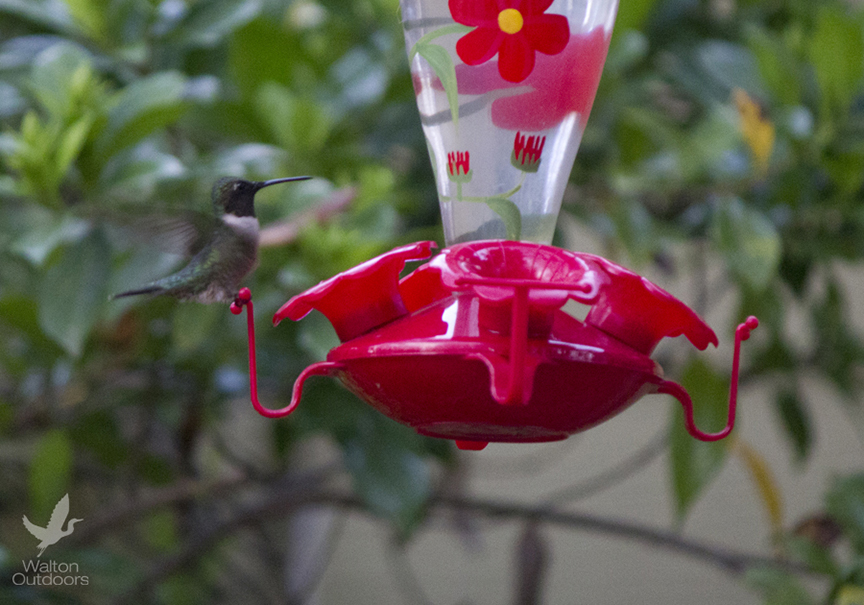Fill up your feeders and enjoy a hummer show!
Between now and early spring, rare hummingbird species from out West turn up in Florida on their way to their winter homes in the tropics.
Ruby-throated hummingbirds are year-round residents throughout Florida, but many from up North also pass through here on their annual migration to Central America.
Floridians who put up hummingbird feeders or grow red or orange tubular flowers may get a glimpse of one of at least nine additional species that have been recorded in Florida, including rufous, black-chinned,
Calliope, buff-bellied, broad-billed, broad-tailed, white-eared, Anna’s and Allen’s hummingbirds. There’s also an extremely slim chance they’ll see a rare Bahama woodstar visiting South Florida from the Caribbean.
One rufous hummingbird, banded in Tallahassee in 2009, was recaptured six months later in Alaska, 3,350 miles away.
The challenge to nature lovers is spotting them. The most common adult hummingbird in Florida is only 3¾ inches long, bill tip to tail tip, and it rarely holds still, darting rapidly from flower to flower. It is smaller than some moths.
The Florida Fish and Wildlife Conservation Commission (FWC) has a few tips for residents who’d like to help hummingbirds load up on energy-generating food before they make their journey over the Gulf and to supplement overwintering birds’ diets
“You can pick up a hummingbird feeder for a few dollars,” said Mark Kiser, coordinator of the FWC’s Great Florida Birding Trail. “Mix a solution of one part white granular sugar and four parts water, bring it to a boil, let it cool and load it into the feeder. Store extra amounts in the refrigerator to have on hand.”
The FWC warns bird lovers not to substitute brown sugar or honey for the sugar. Both can be toxic to hummingbirds.
Some authorities suspect adding red food coloring to the sugar solution may also be harmful to hummers.
“That’s not necessary, anyway,” Kiser said. “Just having red on the feeder is enough to attract hummingbirds.”
FWC biologists say it is extremely important to clean the feeder and fill it with fresh sugar solution at least once a week in the winter and twice a week in the summer to avoid spoilage, which may make the birds sick. Soap and water works if you rinse it well, but a vinegar-and-water solution is better. Rinse and then fill the reservoir half full of hot water, add a splash of vinegar and shake it or scrub with a bottle brush, then rinse. Feeders that easily disassemble are best.
Another way to attract hummingbirds is to plant native vegetation that produces nectar that is part of their natural diet. Kiser recommends firebush, coral honeysuckle, trumpet creeper, cross vine, red buckeye, coral bean, necklace pod, Geiger tree, cardinal flower, Florida flame azalea, butterfly milkweed and standing cypress.
North Florida and Panhandle residents have the best chance of encountering the species from Western states, and South Florida residents are most likely to see the ruby-throated hummingbirds that remain in Florida through the winter, although some Western species also turn up there. Most ruby-throats migrate to Central America until it’s time to head north again next spring.
“It’s always a treat to see a hummingbird, hovering at a feeder or flower,” Kiser said, “and this time of year the variety of species you see makes it even more exciting.”
To learn more about birding in Florida, click here.
Information courtesy FWC.

